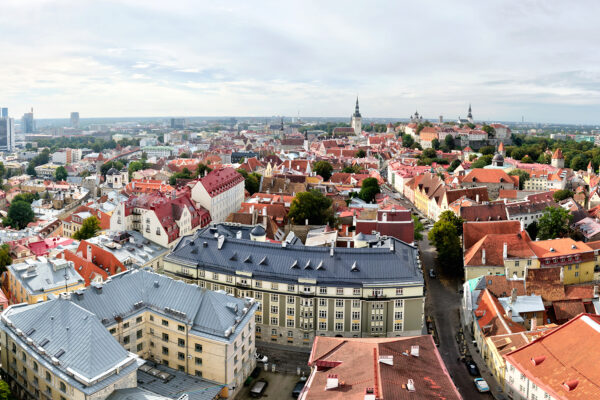
After Russia’s annexation of the Crimea, the Moldovan breakaway region of Transnistria might seem the likeliest target for future Russian territorial claims. Indeed, the region, which, like the Crimea, has a majority ethnic Russian population, requested admission into the Russian Federation last week. In a 2006 referendum, 97 percent of Transnistrians voted to join Russia.
But Daniel Berman, a PhD candidate at the London School of Economics, points out at his blog that Russian annexation of Transnistria is actually unlikely. Whereas the Crimea was historically part of Russia and is separated from the country only by a narrow waterway, Transnistria shares no border with Russia. Rather it borders on the west of Ukraine — the very region that seeks deeper integration with the rest of Europe instead of Russia.
The “next Crimea,” Berman suggests, is more likely to be the northeast of Estonia. The city of Narva there, the Baltic state’s third largest, has an 82 percent ethnic Russian population. 94 percent of the city’s residents speaks Russian. Like the Crimea’s Sevastopol, which headquarters Russia’s Black Sea Fleet, Narva was a Russian port city and the site of major battles — against the Swedes, in the early eighteenth century, and the Germans, during World War II.
Russia justified its intervention in Ukraine by claiming a right to protect Russian speakers and their “compatriots” in the former Soviet republic. Last week, a Russian diplomat raised concerns over the treatment of Russian speakers in Estonia, saying, “Language should not be used to segregate and isolate groups.” He expressed alarm “by steps taken in this regard in Estonia as well as in Ukraine.”
Russian worries are not without merit. As Berman writes, “Narva is a major symbol of what is one of Estonia’s largest domestic problems, its effort to reduce the size of its Russian minority population through the mechanism of denying a substantial percentage of its residents citizenship.”
Less than half of Narva’s residents have Estonian citizenship while some 36 percent are Russian citizens. Another 16 percent holds no citizenship at all.
Social problems disproportionately affect Estonia’s Russian speakers, from unemployment to crime to drug and alcohol abuse. 40 percent of Narva’s residents is jobless and the city has one of the highest HIV rates in Europe.
Berman assesses that Russia’s case for intervention in Narva is stronger than it was in the Crimea. The city is almost uniformly Russian in population and has more cause for discontent with the government in Tallinn than the Crimea did with the pro-Western authorities that replaced President Viktor Yanukovich in Kiev.
By contrast, he writes, the West has less reason to oppose a Russian attempt at annexation. Narva has little economic or strategic value, “the Estonian government’s treatment of the local population is indefensible and the locals, especially those who are stateless, have much to gain from Russian support.”
Yet the West would be compelled to respond, given that Estonia is a member of NATO and the other allies have committed to its defense.
Berman, then, describes Narva as “the point of maximum weakness for the alliance.” NATO is obligated to fight for it but if it did, the Western alliance “would be intervening to prevent a genuinely oppressed local population from exercising self-determination.” Russian president Vladimir Putin, he adds, “could ask for no better battlefield.”
